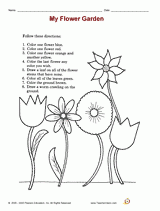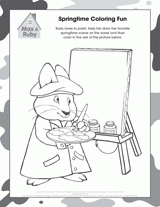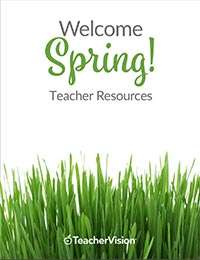Use a School Readiness Activity to provide early mathematical thinking experiences for preschool children that will prepare them to do well in the early grades.
Grades:
Subjects:
Comparing Size: Smaller or Bigger
Purpose/Skills
- To compare objects as small and big
- To use the terms smaller, bigger, smaller than, and bigger than
Materials
Reference chart for models of small and big; a variety of small and big items such as small and big balls, shoes, dolls, trucks; books about small and/or big things
| small | big |
| smaller | bigger |
| smaller than | bigger than |
| compare | comparing |
| comparison | size |
Literature Suggestion
Read Oonga Boonga by Frieda Wishinsky, or another book that that lends itself to discussing small and/or big things.
Warm-Up
Play an exercise game with children. Ask children to duplicate your motions (see, do, and say) as you make a small circle with your fingers joined together and a big circle with your arms extended and joined together. As you make the movements, say, "Small circle, big circle," and have children repeat.
Procedure
- Introduce the reference chart to children. Invite children to identify the small ball and the big ball. Use a see, touch, and say approach by showing objects of different sizes and asking children to identify them as small or big.
- On a second round, use the reference chart to teach children the meaning of smaller and bigger. Explain that they are comparing sizes. When children are comfortable identifying smaller and bigger objects, teach them to use the expressions smaller than and bigger than.
- Learning sequence:
- Here are 2 balls. (small, big) Who can touch and say, This is a small ball? Big ball?
- Here are 2 balls. Who can touch and say, This ball is smaller? Bigger?
- Here are 2 balls. Who can touch and say, This ball is smaller than the other ball? Bigger than the other ball?
- Continue making comparisons using other sets of small and big objects.
- Teacher Tip: Some children will need to touch both of the items to understand the concept of small and big.
Invite children to sort and classify shapes into small and big categories. Provide "contained space" such as small and big baskets (labeled small and big) into which children can sort the shapes.
Observation Assessment
- Proficient - Child can identify two items as small and big, and can use the terms bigger than and smaller than correctly.
- In Process - Child can identify items as small and big, but needs prompting for using comparison words.
- Not Yet Ready - Child does not yet identify items as small and big.












